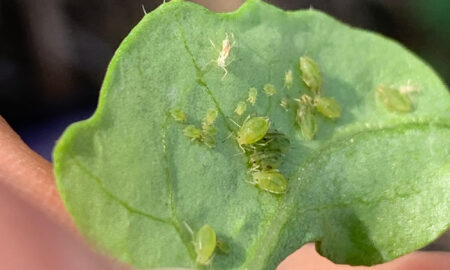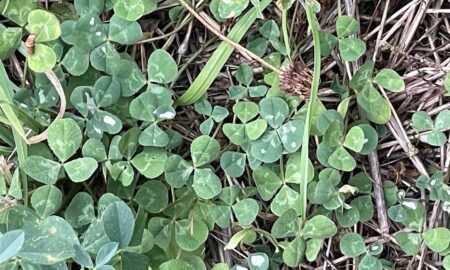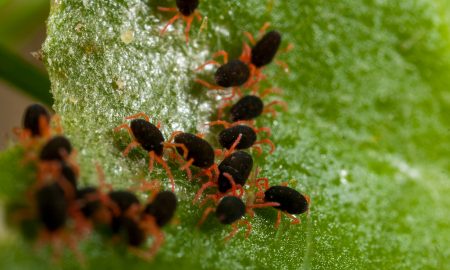Brown wheat mite (Petrobia latens) has been identified damaging establishing oats in the Goolma in the NSW Central Tablelands. The mites were causing mottled discoloration of leaves and were found in several paddocks.
Brown wheat mite identification
At 0.6 mm in length, the adult brown wheat mite is very small! Even smaller than Bryobia mites which are 0.75 mm long.
The brown wheat mite’s small size can make identification tricky.
It can look similar to Bryobia mites to the naked eye. The brown wheat mite and Bryobia mites belong to the same taxonomic family, Tetranychidae, also commonly known as spider mites.
Bryobia mites have also been identified damaging establishing crops this season. There have been reports of Bryobia in canola and vetch, in Victoria’s Northern Country, and the NSW Riverina and Central Tablelands.
Like Bryobia, the brown wheat mite is oval-shaped with eight red-orange legs, of which the two front legs are distinctively long.
But a closer inspection will reveal one key difference — body shape.
The brown wheat mite is globular whereas Bryobia mites have a flattened or squashed appearance.
Unfortunately, this feature is not easy to see with a naked eye. Even a smart phone macro lens may not be much help in this case.
The small size of brown wheat mite also means that it could be mistaken for the immature form (nymphs) of other mite species such as the blue oat mite or the Balaustium mite.
If you are a broadacre grower or adviser and are unsure about the species of a mite population, we can help you.
Incidences of brown wheat mite
The brown wheat mite has now been reported to PestFacts south-eastern during the winter-cropping seasons of 2017, 2018, and 2019. These incidences were reported from the NSW Riverina and North West Slopes and Plains, and the Victorian Mallee.
Prior to 2017, brown wheat mite reports to PestFacts south-eastern were rare. Although recent reports were sporadic, we can’t help but wonder, what has promoted this increase in reports?
Could it be the drier conditions in recent years?
Brown wheat mite is a dry season pest, with their populations reduced by heavy rains during the winter-cropping season.
Or has brown wheat mite been around more years than previously thought and has flown under the radar due to misidentification with other common mite species?
While the answer is not clear and there are likely multiple contributing factors, we do know that brown wheat mite is not well understood in the context of Australia’s broadacre farms e.g. economic thresholds, population dynamics, timing of egg hatching and laying.
Report your mite (and other invertebrate) sightings to the team at PestFacts south-eastern, especially if you are unsure about the species. All reports are entered into the PestFacts map database, which will help to build a more comprehensive picture about brown wheat mite distribution, prevalence and damage over years.
Acknowledgements
Field observations
James Challis – Rodwells (Northern Country VIC)
Tim Condon – Delta Ag (South West Slopes NSW)
Geoff Minchin – Local Land Services (Riverina NSW)
Phil Stoddart – Stoddart Agriculture (Central Tablelands NSW)
Cover image: Photo by Julia Severi, Cesar Australia





